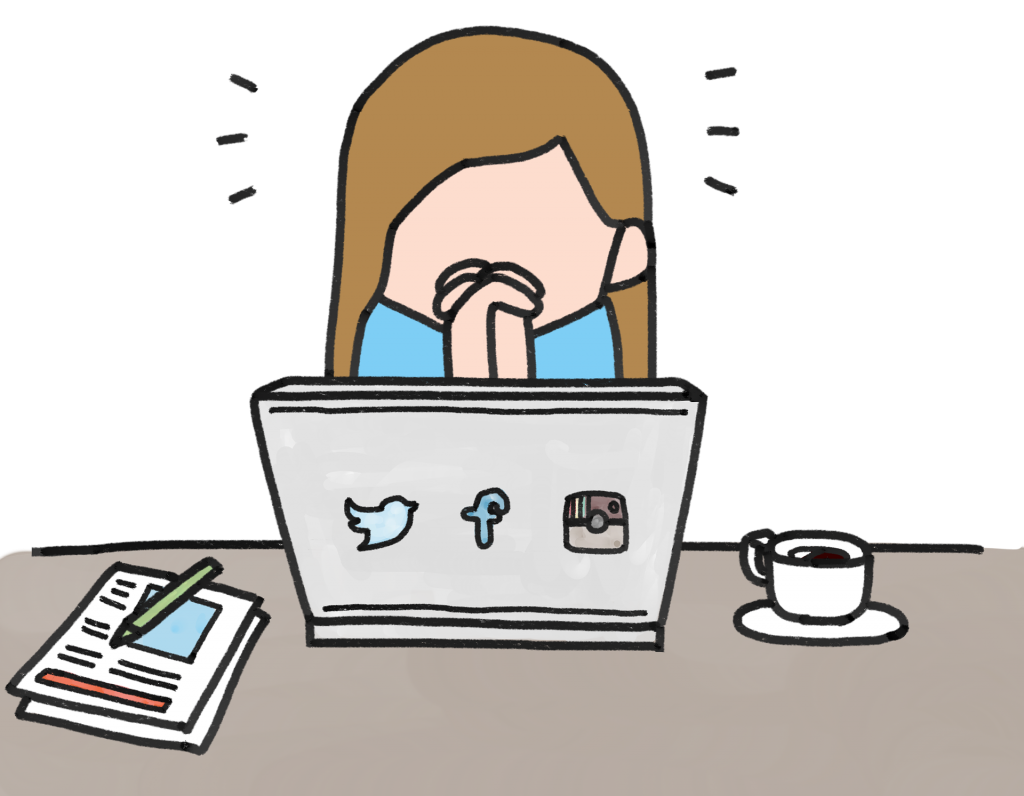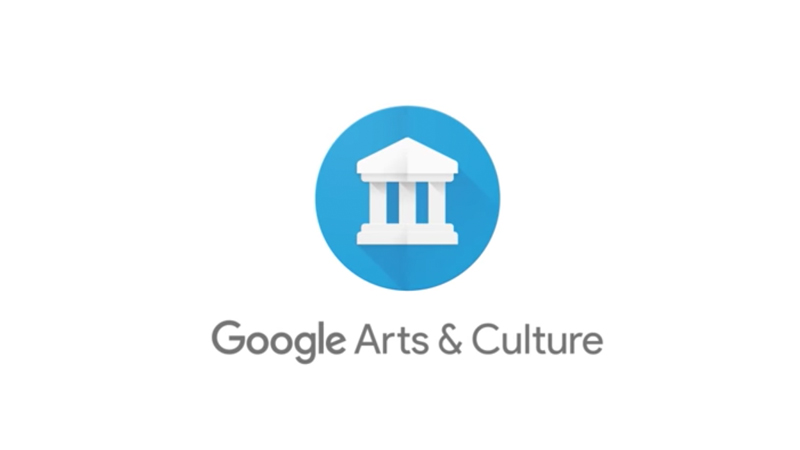written by: Aurora E. L. Turkenburg
On Thursday, March 12th of this year, the Dutch government advised to halt all venues with more than 100 people present in the face of increasing Covid-19 contagions. As I studied for an exam that would take place the day after, my email exploded with cancellations of venues, plans and university tests. While rummaging through a mountain of backlog the following week, I noticed an email from my hometown church. All services would be streamed online from March 15th onwards. The faithful could only visit God in the Cloud.

Visiting God or his emissaries via digital media, however, has been the norm for several religious groups even before the age of Covid-19.
But where do we find religion in the digital world? Just about everywhere.
The most used medium by religious groups is the simple, yet complicated Cloud. Livestreams, most of which end up on websites or Youtube include services from The Church of Jesus Christ of the Latter-Day Saints (Mormonism), Lakewood Church (Charismatic Christianity), and Friday prayers for practitioners of Islam. While most of the services are free, some services are offered in subscription-packages. Interestingly, the increase of online services has led to me watching services across denominations and countries easily from home.
Some religions have made the move to the digital world long before Covid-19 forced them. Most religions can nowadays be found on social media platforms including Facebook, Twitter, Instagram, and even TikTok. The Tibetan monk known as the Dalai Lama, as well as the Catholic Pope, for example, have been avid users of Facebook for years. The pages are managed not by the men themselves, but by a social media team. However, the channels host livestreams, and regular posts show interviews, photographs, summaries of events, and short sermons by both men. Of the two, the Dalai Lama has embraced online technology more fully, preaching online via livestreams and hosting online video-lectures on Tibetan Buddhism. His popularity can be seen in his followers-count, which has passed 14 million Facebook-users.
Next to the use of sites and digital media platforms that support real-life religion, a whole other type of religion exists. This type of religion can only be found digitally: the online-religion. The best known example of an online-religion is Jediism, a religion based in part on the Jedi characters from the Star Wars franchise. Their churches, usually referred to as Jedi-temples, appeared online after 2001. Several temples are located on the world wide web exclusively. While members may meet in person, most Jedi only ever meet online. The Temple of the Jedi Order, for example, hosts online initiation programs, text-only sermons, and facilitates teacher-student classes via videocalls and online chats. The ‘temple’ is active to this day.
In the age of Covid-19 my Sunday mornings, similar to my weekday mornings, now begin with a cup of tea and an opened laptop. This ‘new’ norm, the use of digital media to convey religion, however, is not as new as you might think. As we have seen, visiting God or his emissaries has been made possible through livestreams, social media, and online videocalls long before Covid-19 existed. The use of digital media has certainly made it easier to check in and check out other religious denominations and churches. I have to say I quite enjoy the idea of watching several sermons on Sundays and select the speaker I like best. If more people out there think the same, perhaps it will become a permanent norm before long – to visit God in the Cloud.
What is your take on digital religion? Tell me in the comments-section.




A very insightful piece of writing that definitely provided me with the lens to view religion from a perspective I hadn’t addressed before; the digital. As rightfully pointed out, although this phenomenon is becoming increasingly more commonplace with traditional religions today, the digital realm has facilitated the development of online religions most likely for much longer.
With regards to my take, I realize that to accept “online religions” as a faith, I first had to change – or broaden – my definition of what constitutes a religion in the first place. This is probably a bias that comes from the traditional religious expectancy of a sacred text or book needed to justify a religion from a historical context, however that view in itself is flawed.
If religion in the end of the day is a faith and belief system, then its foundations do not necessarily have to be rooted in past history, as belief is contextual and shaped by many social, political, environmental and even economic factors of experience. One might even ask themselves whether all of us subscribe to the religion of capitalism, given that it is in its essence a belief and faith system…
Wonderful piece of work, very much enjoyed it!
Thank you so much for your insight. I am glad to read you enjoyed this article. The concept of ‘online religion’ is indeed a complex one. Perhaps the particular example used in this article, ‘jediism’, is extra challenging because it cannot be classified as a traditional faith indeed. In religious studies it falls both under ‘new age’ and ‘fiction-based’ religions – the latter term is an invention of Dr. M. Davidsen, a university lecturer at Leiden University. While your bias is indeed common, it is understandable and to think of religion as something text-related as well as belief related. Fortunately, the Jedi do have a text that can be considered sacred: a creed that is considered doctrine, an example of which you can find online and is shared by most Jedi-temples (ex. link: https://www.templeofthejediorder.org/doctrine-of-the-order). Once again, I am glad to have broadened your horizons, at least where religion is concerned.
Great article, really enjoyed your writing style! I actually very recently saw a news item on this topic, in which several members of a Dutch church were interviewed about their take on online services. I remember one man saying that for him, an important aspect of church was also the “bonding moment” after the service, when members of the community are able to catch up or get to know each other. Don’t you feel this would be lost when ‘God in the Cloud’ becomes the norm? Or do you think an online-only church could form this same sense of community?
Thank you for replying to this article. I am glad to read you enjoy my writing style. In response to your question, I personally believe a sense of community can be created in an online-only setting. For example, if you are a fan of a particular show/band/artist, it is entirely possible to speak and discuss this fandom with people online, to share your thoughts, and even have a meaningful conversation regarding this topic, even if that is not possible in the physical setting. A sense of community can then be created – online. Whether this is the same sense of community as in the physical realm, however, I do not know. In part, perhaps, because what ‘community’ means, is naught but an opinion by its members. It is certainly an interesting topic for further research by religious studies scholars. Some research has been done in the past, some well-known examples being the works on communitas by Paul Goodman and Victor and Edith Turner.
Very attractive topic and insightful opinion — the digitalization of religious activities during the COVID-19 time. The virus has changed a lot of things in our daily life, even those most important and serious events that you used to mandatorily attend, but now these things are all carried out online.
We experience our school life online, business life online, then how about religious life? Visiting God online may sound a bit wired at first, as we see most religious activities happening in very specific and divine places, at a fixed time. But you provide the evidence that changes my “stereotype”. And now the whole thing is just natural.
As said in the text, using social media, the important religious leaders can share their moments with every follower, so that these religious doctrines will be more accessible to more people, especially people of lower class. By using apps, the followers can follow every religious event and connect with other member, it shows the possibility that the development of technology can contribute to the better future of religious communities – which may change some religious figures’ pessimistic attitude toward technology today.
Thank you for replying to this article. I am glad you value my opinion. It is indeed interesting to follow how the ever-increasing online presence of religious figures and leaders might influence both the religious and the religions. I would not be surprised to find that in a few year’s time research will have been done on the effect of Covid-19 on the online presence of religion – it is a worthy topic indeed. The change in attitude towards technology is also a worthy topic of discussion – interestingly, the Dalai Lama has a post on Facebook, dated August 14th, detailing his pessimistic attitude towards the use of technology such as Facebook. In this post, he hints a warning against the seducing powers of digital media (link: https://nl-nl.facebook.com/DalaiLama/posts/10157597357772616?__tn__=-R). Quite the turnabout, to use social media to warn against social media use.
Thank you for writing this piece. As a non-religious person myself It never occured to me so directly that religious services as well needed to switch to online world.
During my time in South Korea it was widely covered that many churches switched to online service after a religious group called the Sinchonji (신천지). The government pinpointed the first major super spreading of COVID to have taken place during one of their services. With members also refusing to be tested, religious all over South Korea faced wide backlash. This was the first time I heard people switching to online religious meetings and I wasn’t sure what to think over it. Your piece gave me some insights to how it operates and that it might not be as new as I had believed.
Although I personally wonder how much people would switch to this online service after COVID. Just like many of us have with online class; something is missing. Would you say this also goes for online religious meetings?
Thank you for replying to this article. The Sinchonji Church of Jesus is indeed a case that was reported in the media. I remember reading a headline about this occurrence. Whether or not people will continue visiting their respective ‘God in the cloud’ once they are again allowed to meet physically is a debatable topic. On one hand, one might speculate that those believers who enjoy watching several kinds of services hosted by more than one denomination of religion might stay online. The same can be said for those with a (physical) disability, as well as to others who might have noticed online services suit them better. On the other hand, one can speculate that those whose change of ‘visit’ was forced by Covid-19 will be all too glad to return to ‘normal’ visits to God. A need for further research on this topic is needed. Then on the topic of ‘missing’, I personally believe nothing is missing with my current online classes. In fact, I am inclined to believe both my person and grades thrive better in the current online educational programs. In this sense, the inclination to stretch this to religious meetings is there, but it is not my place to state this to others as fact. What is not ‘missing’ for me, may well be ‘missed’ by someone else during or after a religious service, after all.